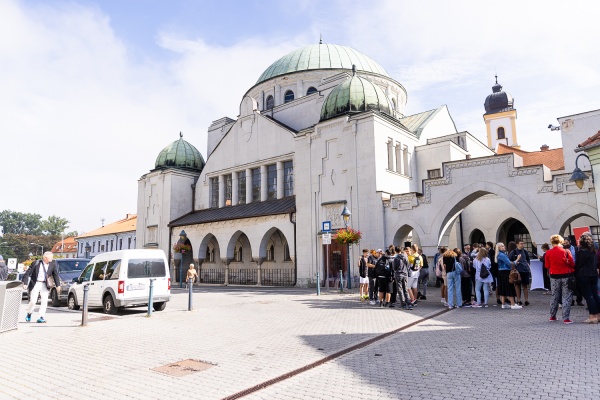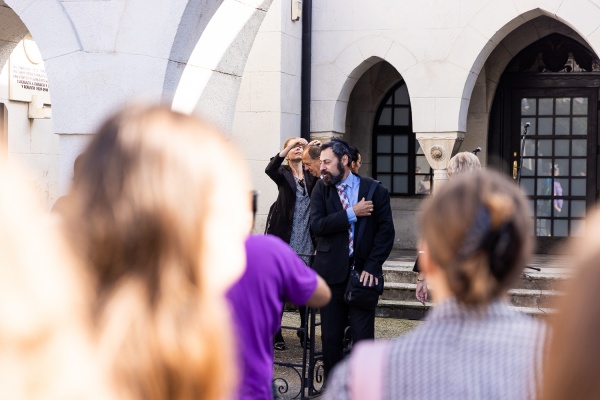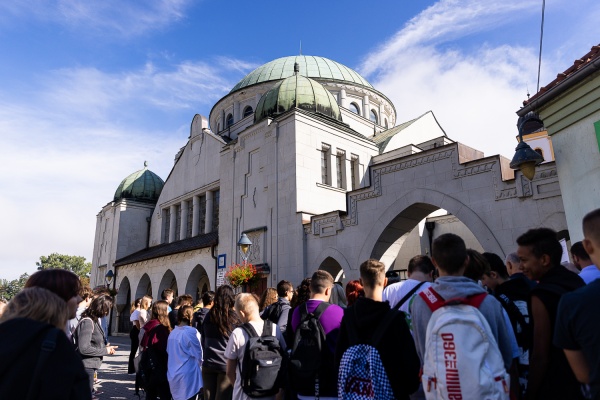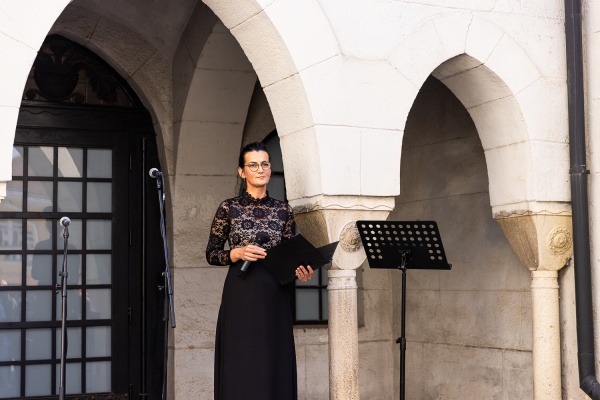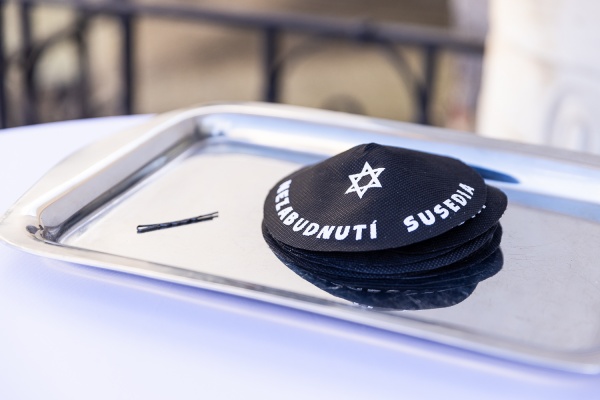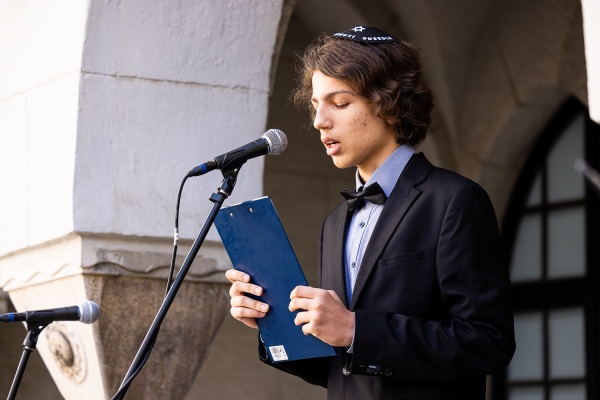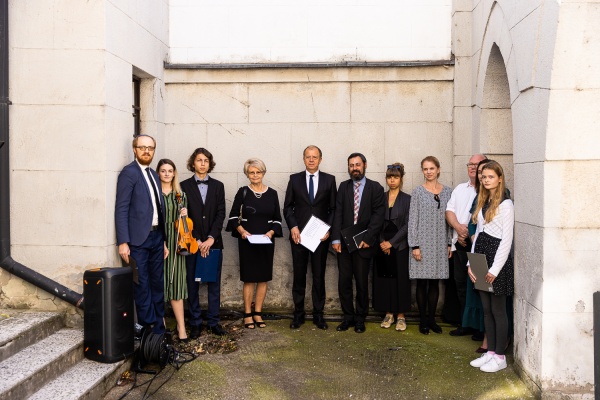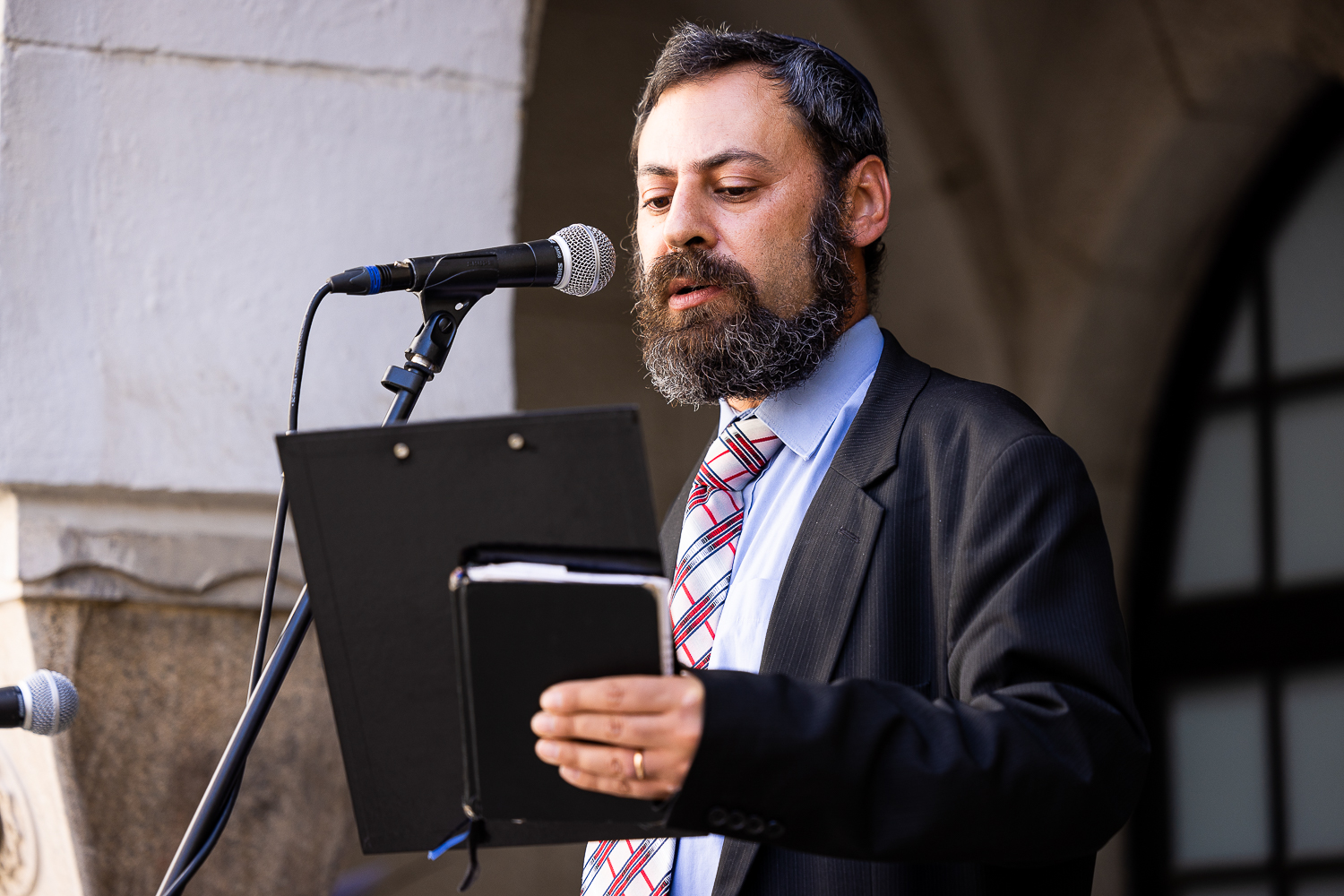
On Friday, September 9, 2022, the city of Trenčín joined the second year of the all-Slovak event called "Nezabudnuti susedia". At 10:00 a.m., sirens and bells rang out in the cities involved, which opened the commemoration ceremony on the occasion of the "Day of the Victims of the Holocaust and Racial Violence".
In 1940, the Trenčín Jewish community consisted of approximately 1,800 people out of a total population of over 11,000. The Trenčian Jews, as elsewhere, mostly belonged to the middle and upper social strata, and despite the traditional anti-Semitism of part of the population, their relations with the majority society were correct. They had their own temple - a synagogue, a cemetery, a folk school, which even non-Jewish children attended due to its good reputation, and cultivated a rich community life. In Trenčín there was, for example, a Jewish gymnasium or scout groups, boys' and girls' - one of the first in the country.
By government decree of September 9, 1941, people of the Jewish faith lost their civil rights. The Jewish Code established a special legal regime in Slovakia in 270 paragraphs. Jews were required to wear a Jewish mark. They did not have the right to vote or assemble, they could not travel or move without permission from the authorities. They were forbidden to practice medicine or veterinary medicine, marry non-Jewish residents. The police could break into them at any time and search their homes as well as their persons, open their letters. They were forbidden to move in certain areas, in Trenčín, for example, in the Brezina forest park, in the city park, or in Hlinkovo, now Mierove square.
Their persecution was completed in the spring of 1942 with the transportation of most of Trenčín's Jews to Nazi concentration camps. More than 1,500 people from Trenčín's Jewish religious community of almost 2,000 did not survive the war. During the Second World War, more than 70,000 Jewish citizens from the entire territory of the then Slovak state were deported to extermination camps or otherwise killed, and another 45,000 from the part of Slovakia that was annexed to Hungary at the time.
Every one was someone's neighbor.
The names of the murdered and the rescuers of those who survived were heard during the nationwide memorial event on Friday, September 9, 2022, also in Trenčín.

